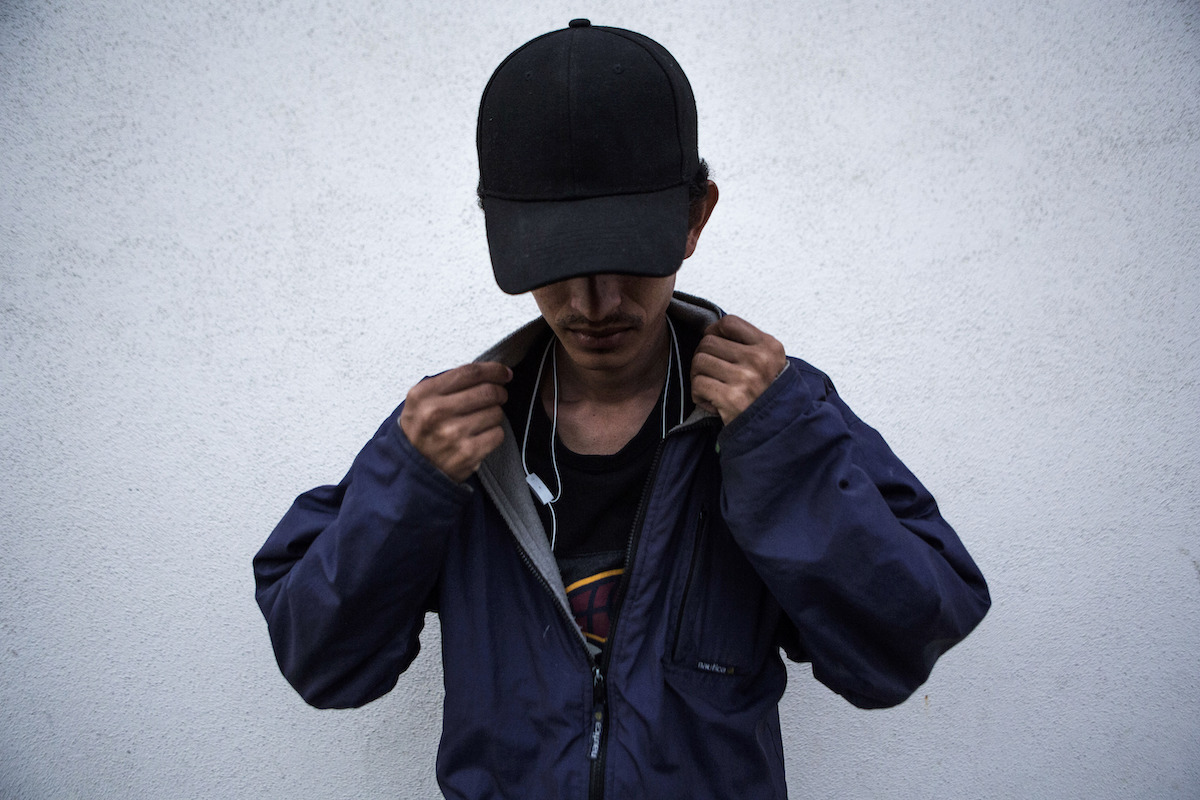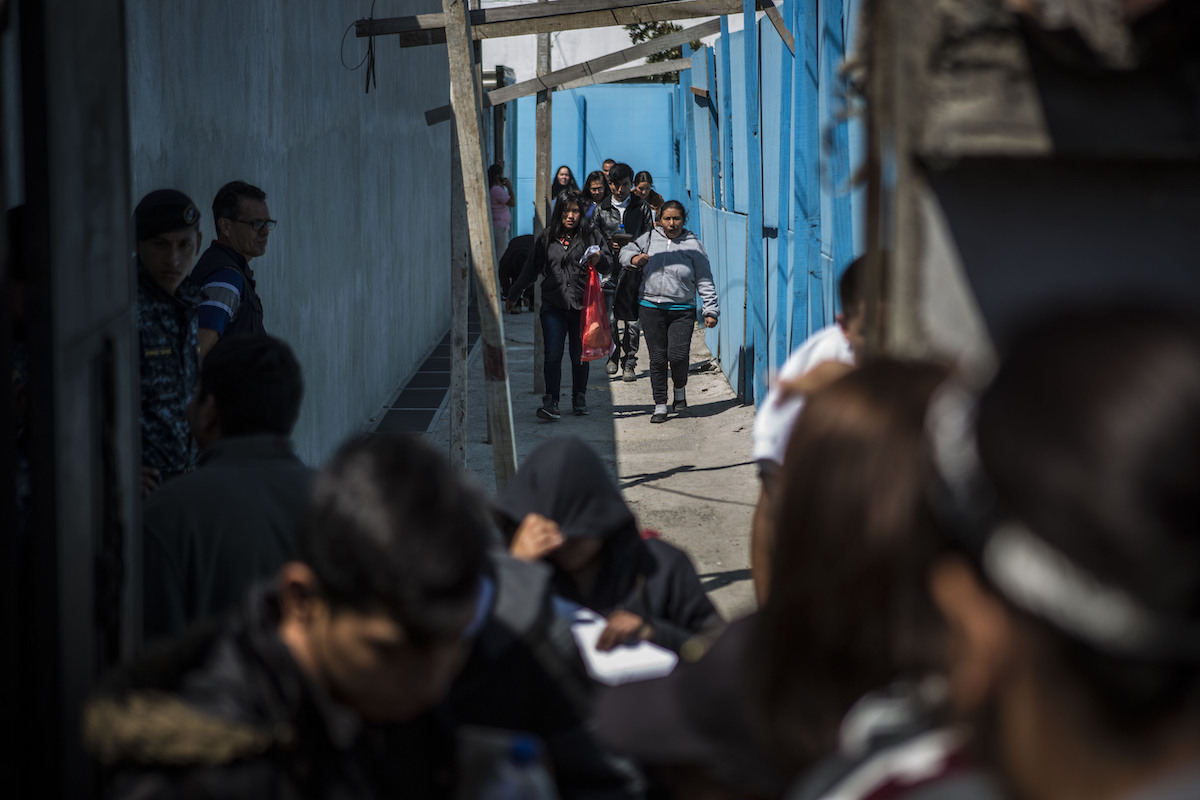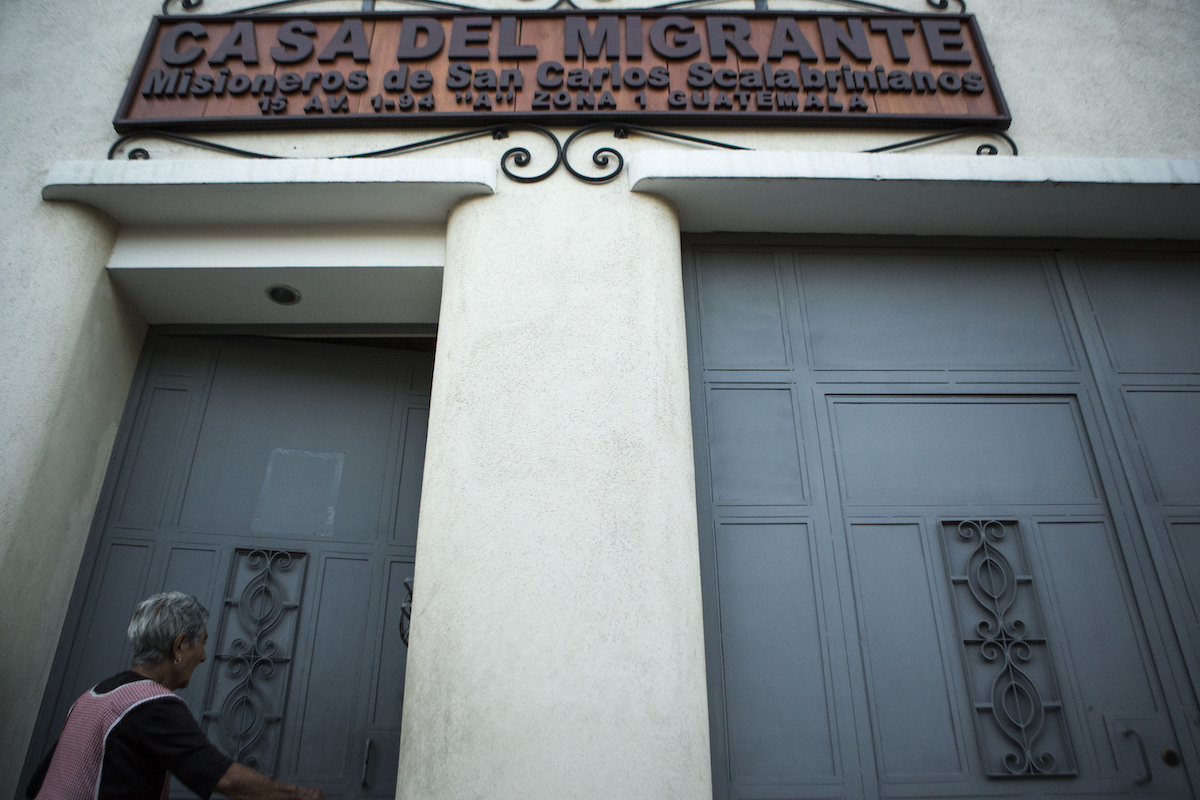

In this February 7, 2020 photo, a Honduran delivery driver stands for a portrait in Guatemala City, where U.S authorities sent him to apply for Guatemalan asylum rather than allowing him to apply in the U.S. Fearing for his life, the 25-year-old had fled to the United States-Mexico border and requested asylum. After nine days in custody, he was put on a plane in McAllen, Texas, and sent to Guatemala City. (AP Photo/Oliver de Ros)
By SONIA PÉREZ D. and CHRISTOPHER SHERMAN, Associated Press
GUATEMALA CITY (AP) — After he was involved in a fender bender with a gang member, the Honduran delivery driver was in trouble: The accident wasn’t his fault, but he couldn’t pay the damages, and the other driver threatened to kill him.
Fearing for his life, the thin, curly-haired 25-year-old fled to the United States-Mexico border and requested asylum. After nine days in custody, he was put on a plane in McAllen, Texas, and sent to Guatemala. American authorities explained that he would wait there for an “initial screening,” the first step in the U.S. asylum process, and eventually return to stand before a U.S. judge, he said.
But it wasn’t true. The U.S. government sent him here to apply for Guatemalan asylum under a new Trump administration policy that puts migrants into this Central American country’s bare bones asylum system with few resources and fewer options.
Hundreds of other Hondurans and Salvadorans have arrived in Guatemala since November. The delivery driver was among a small number who actually applied for asylum.
Most return to the countries they fled rather than wait for Guatemala to process them, leading some to call the U.S. program “deportation with a layover.” International law does not allow the U.S. to deport asylum seekers directly back to their home countries.
“They’re basically removing the people from [the U.S.] with lies,” said the driver, who asked not to be quoted by name because he feared reprisals.
The driver eventually gave up. In February, two months after he arrived in Guatemala and requested asylum, he abandoned the process and traveled to Mexico. He complained about the slow-moving bureaucracy and lack of opportunities to work in Guatemala. He said he would try to get a work permit in Mexico, save some money and maybe try again to enter the United States.
Asked about the driver’s allegation that he was misled or lied to, the U.S. Department of Homeland Security said the asylum program “does not work this way.” Without more information to investigate the accusations, the agency said, it could not comment further.
From the program’s start in November through last week, the U.S. government shipped 683 asylum-seekers to Guatemala. That is more than double the number of asylum-seekers processed by Guatemala in all of 2018. But only 14, or about 2% of the foreigners actually pursued asylum here.


In this February 13, 2020 photo, Central American migrants, sent from the United States, walk out in the streets of Guatemala City after arriving at the airport. (AP Photo/Oliver de Ros)
Washington has made similar agreements with Honduras and El Salvador, and the U.S. plans to begin transfers of asylum-seekers to those countries as well.
Guatemala, Honduras and El Salvador constitute Central America’s so-called Northern Triangle countries that have been responsible for most of the migrants arriving at the United States’ Southwest border in recent years.
The Asylum Cooperative Agreements deny a chance for asylum-seekers to even apply in the U.S. Authorities say the Guatemalan accord has been expanded from people arriving in El Paso, Texas, to the entire border. Immigration officials have not publicly disclosed any criteria by which Salvadorans and Hondurans are selected to fill the limited seats on the flights.
In its efforts to reduce the flow of migrants, the Trump administration sees asylum as an overused ploy by people trying to stay in the United States for other reasons and argues that if they really face dangers in their homelands, they should be reasonably safe elsewhere.
Last month, a coalition of groups led by the American Civil Liberties Union sued the U.S. government over the agreements. They argue that Guatemala, Honduras and El Salvador do not have the capacity to properly assess asylum cases and lack the resources to protect and support those who do seek asylum there.
When asylum-seekers land in Guatemala, they are processed by officials and asked if they want to stay in Guatemala or return to their home countries. They are given 72 hours to decide, and the government’s support ends at the airport gates.
They usually go to a local migrant shelter to shower and consider their options. If they are interested in seeking asylum in Guatemala, they are channeled toward nonprofit group that offers legal counseling.



In this February 7, 2020 photo, an employee waits to be let into Casa Del Migrante, a local migrant shelter in Guatemala City. (AP Photo/Oliver de Ros)
Those who decide to go forward must request an appointment with Guatemalan asylum services, but it can take more than a year for a final decision. During that time, asylum-seekers are on their own.
Yael Schacher, senior U.S. advocate at Refugees International, this month interviewed some 20 people who had been sent to Guatemala.
About half of the people she spoke with had not known they were going to Guatemala when they were put on the plane in the U.S. Some thought they were being transferred to detention centers elsewhere in the United States. Only one of those she spoke with had decided to seek asylum in Guatemala, Schacher said.
Some of them almost certainly qualified for asylum under U.S. law because they faced clear dangers at home, she contends.
One was a former Honduran police officer who said a gang had threatened to kill him because he was a witness in a criminal case. His wife and child were granted asylum in the U.S. on the basis of his case, but he was sent to Guatemala. Schacher said he seemed savvy and could likely advocate for himself.
Another was a 19-year-old from Honduras who was panicking because he knew no one in Guatemala, the rest of his family was in the U.S. and he was fleeing a gang that had raped his sister.
“This is the kind of kid who in 72 hours, without any medical counseling, without legal counseling, is not going to know what the hell to do,” she said.
Many people aren’t even staying 72 hours, Schacher said.
“That issue of will they be safe in Guatemala while they wait isn’t really coming up, because nobody is waiting,” she said. “The issue is are people just going back to their home countries without ever effectively being screened?”
Even with Guatemala’s slim asylum record, it is far ahead of neighboring Honduras and El Salvador. In 2018, Honduras handled 57 asylum applications.
Andrés Celis, who represents the United Nations’ refugee agency in Honduras, said the country could handle a moderate number of asylum-seekers. But with a large number, “there would be significant challenges for the Honduran government.”
In El Salvador, immigrant advocate Cesar Ríos, director of the Salvadoran Migrant Institute, described the government unit that handles asylum cases as “one person with a desk.”
“If we aren’t prepared to take care of our people, how would it be for people who arrive” from elsewhere, Ríos said.



In this February 7, 2020 photo, an employee waits to be let into Casa Del Migrante, a local migrant shelter in Guatemala City. (AP Photo/Oliver de Ros)
Earlier this month, El Salvadoran Foreign Minister Alexandra Hill Tinoco essentially agreed. She said her country was not ready to receive asylum-seekers from the United States and will not accept them until it can offer them the necessary protections and support.
Government officials in Honduras and El Salvador did not respond to requests for interviews.
Now broke in southern Mexico, the Honduran driver who abandoned his asylum case in Guatemala, said he migrated again because as a refugee no one would give him work in that country. The organization that had helped him rent a room would pay for only two months, and he had no way to pay rent after that.
“If there’s no work, you can’t be waiting for asylum,” he said.
***
Associated Press writer Sonia Pérez D. reported this story in Guatemala City and AP writer Christopher Sherman reported from Mexico City. AP writers Marcos Alemán in San Salvador, El Salvador; Marlon González in Tegucigalpa, Honduras; Oliver de Ros in Guatemala City and Elliot Spagat in San Diego contributed to this report.


